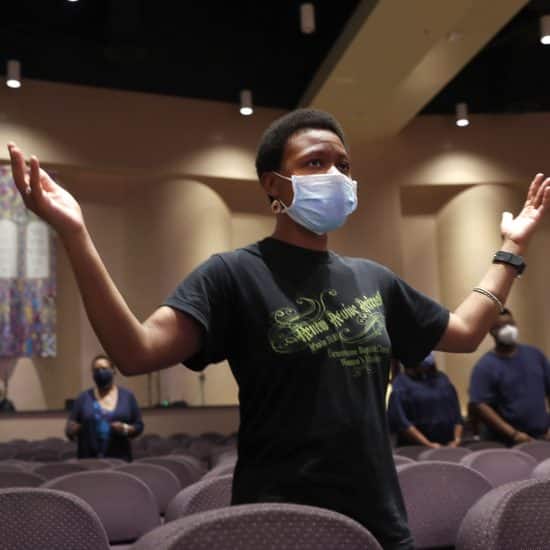
How many people in your congregation would you classify as tithers? The answer likely depends upon the interpretation of the biblical admonition to tithe that church leaders and members agree to accept.
The Barna Group (www.tinyurl.com/jehwkhs) lumped all gifts to a church or to not-for-profit organizations together in its 2013 donor trends poll. The research firm calculated that about 5 percent of all American adults tithed or gave 10 percent of their annual income in 2012 to charitable causes.
 The organization figured the rate “based on total giving divided by household income,” instead of allowing those who took the survey to determine the percentage. The Barna Group calculated the rate among “born-again” Christians at 12 percent in 2012. The study included a telephone survey of 1,005 adults conducted Jan. 16-22, 2013, but did not provide the margin of error.
The organization figured the rate “based on total giving divided by household income,” instead of allowing those who took the survey to determine the percentage. The Barna Group calculated the rate among “born-again” Christians at 12 percent in 2012. The study included a telephone survey of 1,005 adults conducted Jan. 16-22, 2013, but did not provide the margin of error.
According to the research organization, the tithing rate stood at 7 percent in 2009, dropping to 4 percent in 2010 and 2011.
The idea of counting gifts to non-profits other than a house of worship is a difficult concept for some church members to grasp. But congregations may have to come to grips with the concept and with the idea that younger generations tend to view tithing in broad terms — service, time and effort, as well as money.
Robert Simms calls the approach “the management of life” in Living Life for the Highest Purpose, published by Stewardship Development Association.
 Bill ShiellNorthern Seminary President Bill Shiell believes congregations must begin to accept the “realities of today,” lessons he said he learned as a pastor. He served as a pastor for 17 years, including at First Baptist Church of Tallahassee, Fla., before assuming the top post at Northern on March 1. Now he shares those concepts with seminary students to teach their congregations.
Bill ShiellNorthern Seminary President Bill Shiell believes congregations must begin to accept the “realities of today,” lessons he said he learned as a pastor. He served as a pastor for 17 years, including at First Baptist Church of Tallahassee, Fla., before assuming the top post at Northern on March 1. Now he shares those concepts with seminary students to teach their congregations.
Shiell experienced an “aha” moment about 10 years ago when he recognized that his “set of gen-Xers” considered all giving as a tithe — “everything from giving to a soup kitchen to giving part of their income to faith-based organizations,” he said.
“The church might only see 2 to 3 percent of the 8 to 10 percent of the income they were giving,” he added.
“Older adults resented that the younger members were not giving it all to the church but still claimed they were giving a tithe.”
Shiell saw younger members as just as interested in “giving their hands and feet” as in giving money. “Giving must be tied to doing…and they are just as giving as senior adults,” he said.
He added he believes the focus should be on generosity, rather than on tithing or stewardship. While still a pastor, he explored the shape generosity and giving might take that would remain true to biblical understanding and would appeal across generations.
Although most pastors do not delve into the specifics, Shiell felt he needed to know members’ giving patterns. He believed that some members might be excluded from ministry, including deacon service, if only one person’s perception (usually the financial secretary) was taken into consideration.
He taught that generosity is just as important a ministry as Sunday School or any other church program. “Every generation wants to see their lives count but [they] go about it in a different way.”
Recognizing those differences, he changed his approach to tithing and stewardship, separating stewardship from the church budgeting process. Then he formed a team of laypeople to help members grow in their giving and preached about the role of the church.
“The only institution Jesus left behind is the church,” Shiell explained. “Instead of denigrating other organizations, we built up the idea of the ministry of the church.”
Shiell has translated some of his church approach to seminarians and leaders. The first change he made was to begin teaching students how to manage money in their own lives, particularly because many of them start seminary training while saddled with undergraduate debt.
Northern is also including teaching about generosity and tithing as part of leadership training. “It starts with the minister. If they are not tithing, how can they teach the church,” Shiell said.
He concentrates on giving as part of the pattern of the Christian life. “We must understand the Bible, especially the New Testament, gives the frame for living. How does the New Testament reframe the story?”
Congregational leaders must help people understand that materialism is part of the American system and not just simply a matter the church fights against, he said. They should teach members how to give experience and memories to the children in their lives, instead of just gifts.
They also must teach the church the many ways of ministering. “The early church had a community chest and food they gave over and above the tithe,” Shiell said.
“The goal is to live life fully.”





